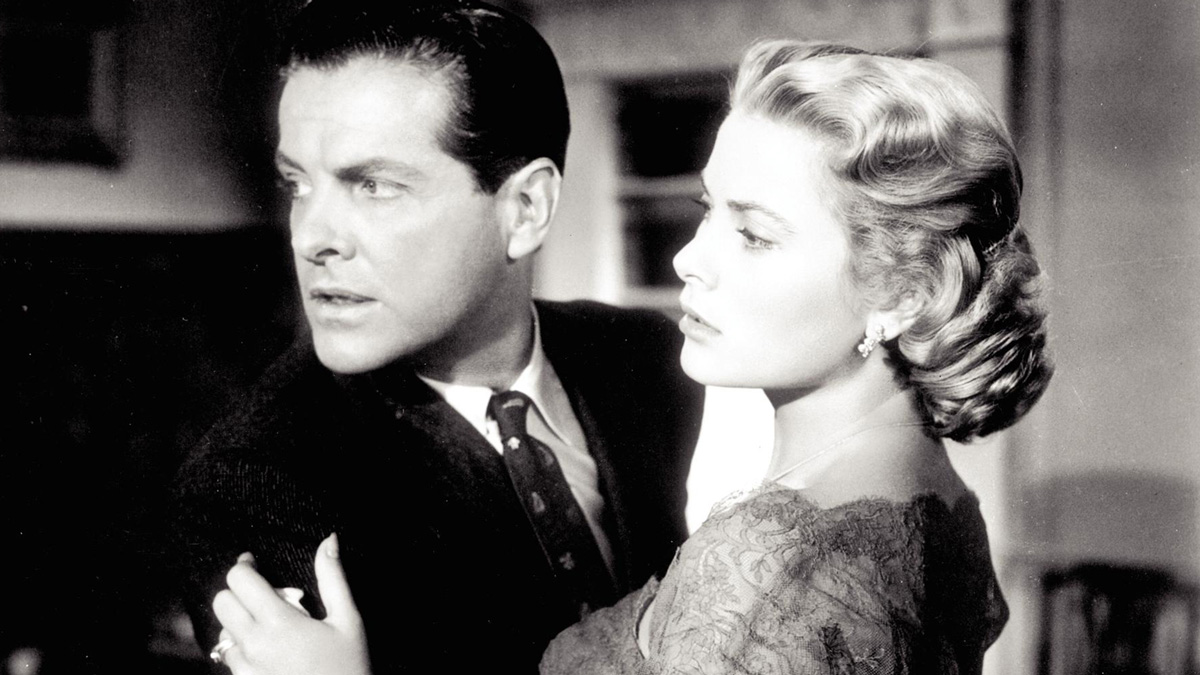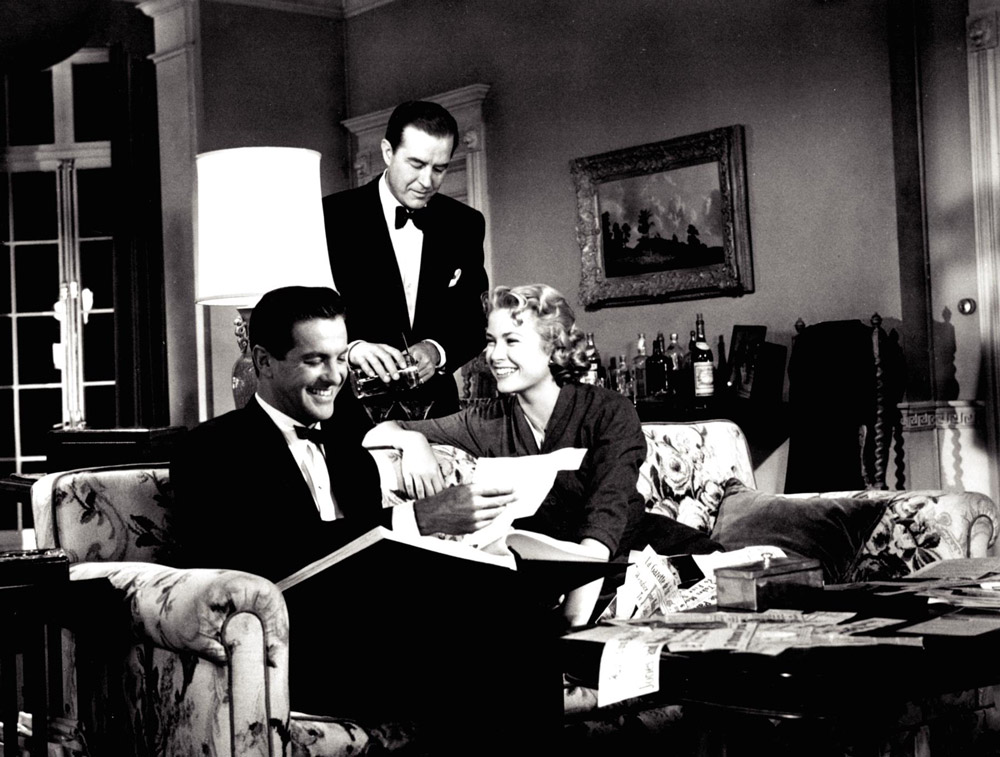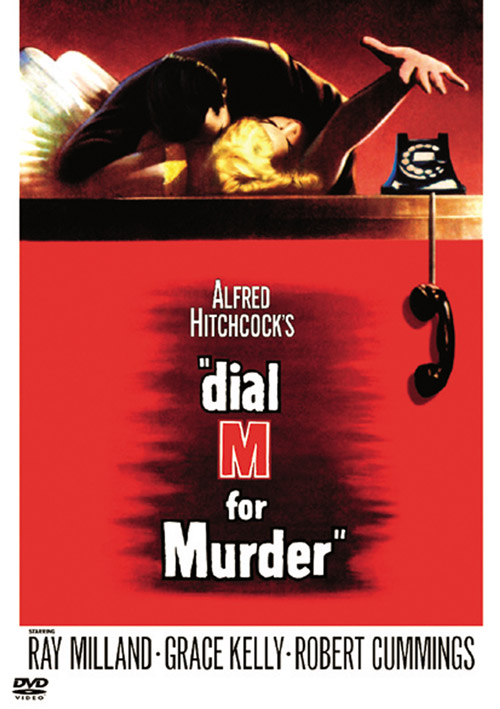
(c)1997 Warner Bros., Monarchy Enterprises BV and Regency Entertainment (USA) Inc. All rights reserved.
Understanding the relationship between Hitchcock and 3D from Hitchcock's only 3D film, ``Turn Dial M!''
2019.03.13
Were the 3D movies of the 1950s an overproduction?
So how much of an influence did Spoto's "strange tricks of 3D movies" have? In the aforementioned " The Man Who Loved Me," there is a famous scene in which a wax museum barker bangs a paddleball at the camera (even a parody of this scene appeared in Hidden Figures Animation's " Monsters vs. Alien " (2009)). Andre de Toth, the director of this film, also used a scene in the western "Rebel Dollars" (1953) in which Confederate guerrillas attack a town, pointing torches and pistols straight at the audience.
In the western film The Great Passage (1953) directed by Raoul Walsh, the antagonists throw sticks and rocks at the protagonist in the climax fight scene, and this is also shot from the front. Incidentally, both de Toth and Walsh were one-eyed, and so could not see the stereoscopic effect for themselves, and so they had to use their imagination to determine the composition.
However, these scenes that look "obviously 3D" are only a small proportion of the film as a whole. For example, Curtis Bernhardt's Raindrops (1953) has no contrived composition and no one would notice that it was a 3D film if they didn't notice. In other words, many 3D films from the 1950s did not emphasize the three-dimensional effect as much as people say. (*8)
*8 In fact, the overuse of cliched pop-up effects is more prominent in 1970s films such as "Ape" (1976) and "Project Kung Fu" (1978), as well as 1980s films such as "Revenge" (1981) and "The Crown of Treasure" (1983).
Hitchcock's attitude towards 3D
So how seriously did Hitchcock actually take 3D? A valuable interview conducted during filming that verifies this can be found in an article titled "Hitchcock Makes a 3D Movie" in the February 1954 issue of the magazine "Eiga no Tomo" (7), edited by Nagaharu Yodogawa. In the article, Hitchcock comments, "I don't agree with the opinion that 3D, widescreen, or CinemaScope are not suitable for thrillers. I think that playing around with 3D movies is actually a good idea. I am thinking of such scenes in my upcoming film, Dial M for Murder, but that is not all there is to it. Rather, I think that the strength of suspense that comes from emphasizing space is more important. However, the truth is that whether it is 3D or not, it is meaningless unless you make a good movie with a good story."

“Dial M for Murder” (c) 1997 Warner Bros., Monarchy Enterprises BV and Regency Entertainment (USA) Inc. All rights reserved.
From this passage, we can infer that Hitchcock was initially reluctant about 3D, but once he began, he took it quite seriously.
[References]
(1) Bob Furmanek/Greg Kintz: “An In-Depth Look at DIAL M FOR MURDER”
(2) Francois Truffaut/Alfred Hitchcock: "Film Technique: Hitchcock/Truffaut" Shobunsha (1981)
(3) Donald Spotow, "The Art of Hitchcock: 53 Films," Kinema Junposha (1994)
(6) Frederick Knott, author of Dial M for Mystery (Ronso Overseas Mystery 211), Ronsosha (2018)
(7) "Making Hitchcock 3-D Movies," Eiga Sekaisha (February 1954)
Text: Takayuki Oguchi
In 1982, he became the director of Japan's first CG production, JCGL. After working as the head designer for the IMAX Dome 3D video "Universe 2 ~Sound of the Sun~" at the Fujitsu Pavilion at EXPO'90, he became a freelance video creator. Won an Emmy Award for the NHK special ``Life: A 4 Billion Year Distant Journey'' (1994). His most recent work is the storyboard for the NHK special "Space Spectacle Vol. 1" (1919). He is also a video journalist specializing in VFX, CG, 3D movies, art animation, exhibition videos, etc., and has contributed numerous articles to film magazines, theater pamphlets, the web, etc. In addition to being a visiting professor at Digital Hollywood University, he is also a part-time lecturer at Tokyo University of the Arts, Graduate School of Animation, Waseda University, Faculty of Science and Engineering, and Japan Electronics College.

"Dial M for Murder"
DVD Special Edition ¥1,429 + tax
warner bros home entertainment
(c)1997 Warner Bros., Monarchy Enterprises BV and Regency Entertainment (USA) Inc. All rights reserved.

